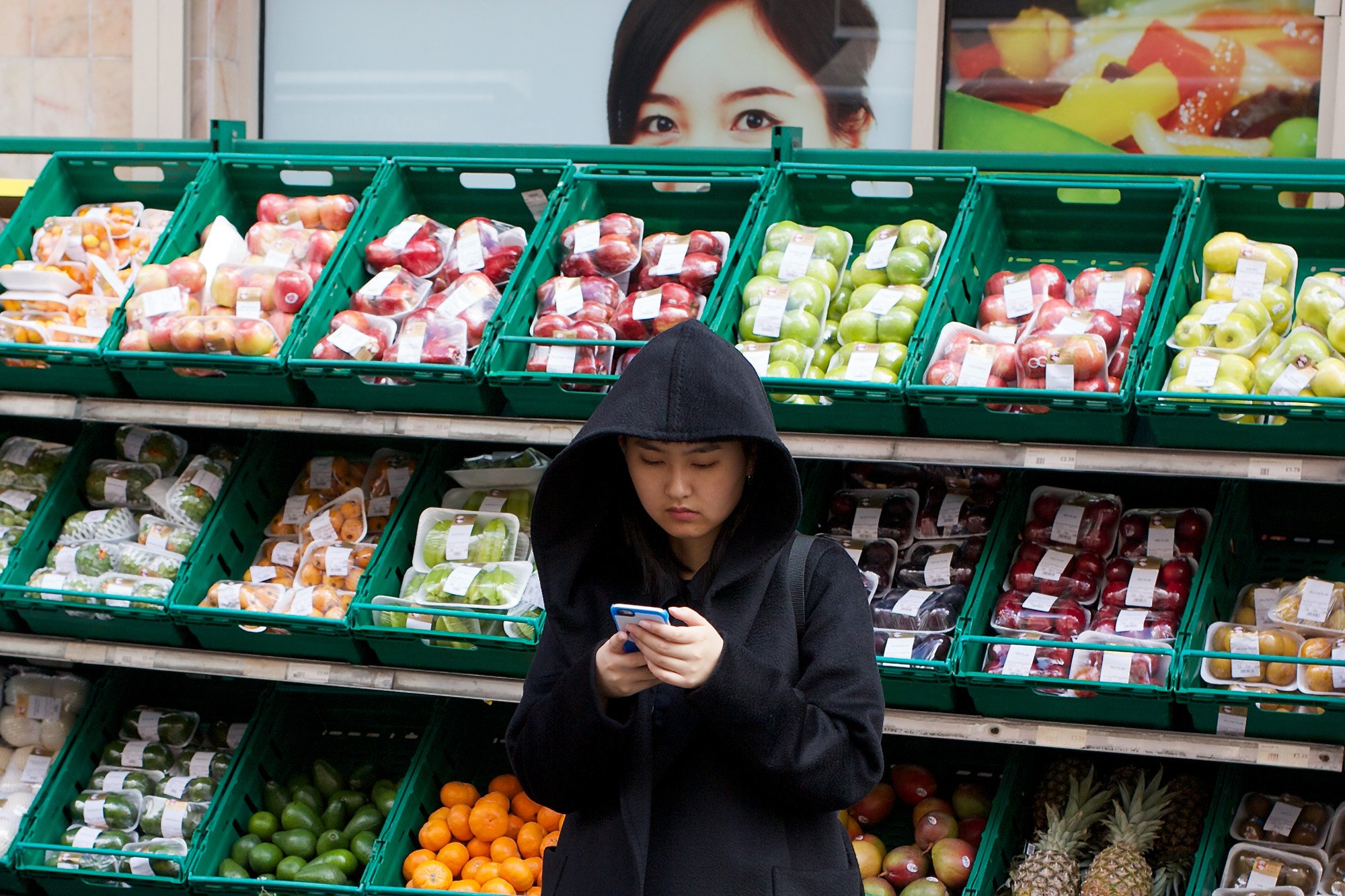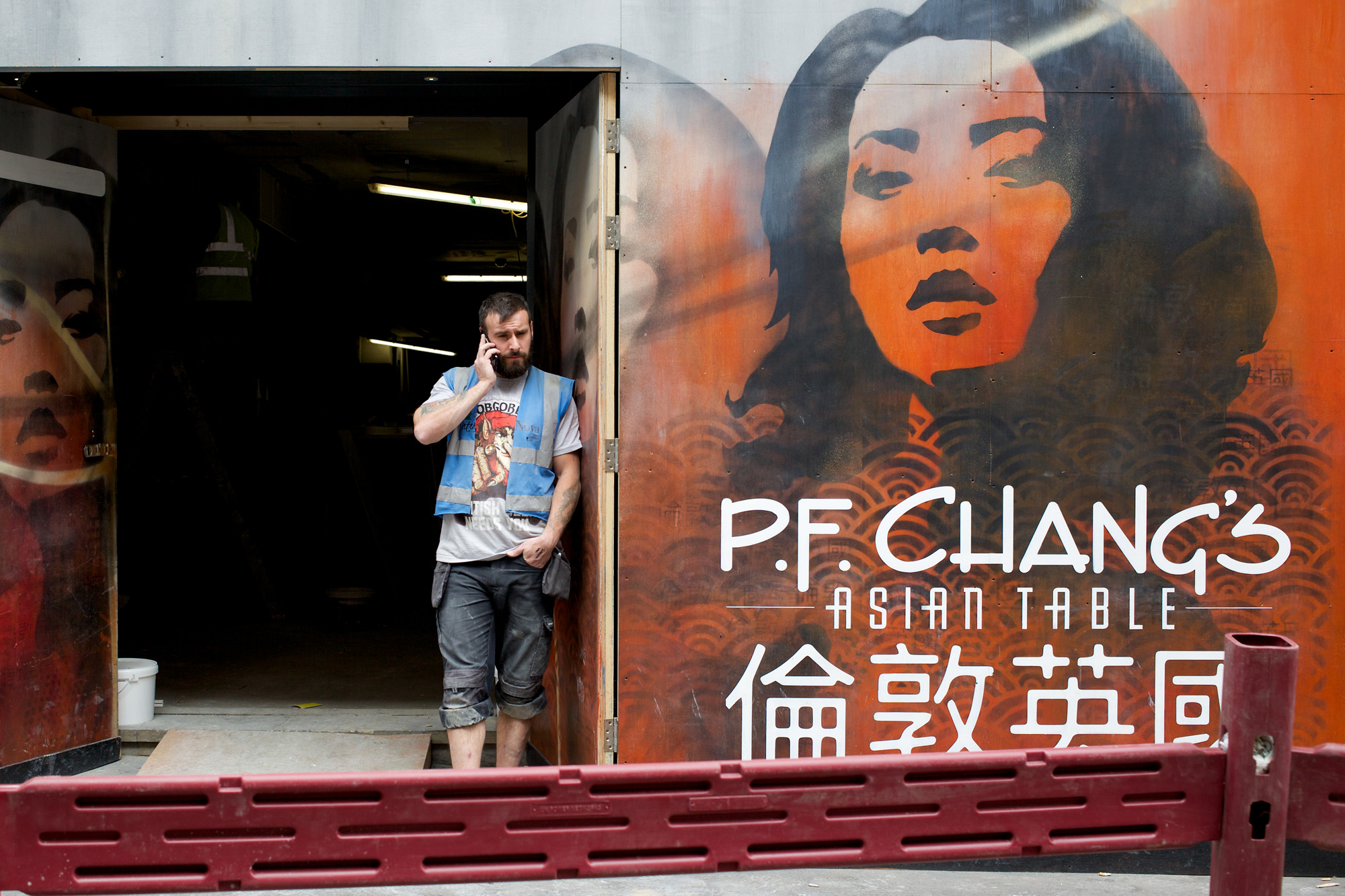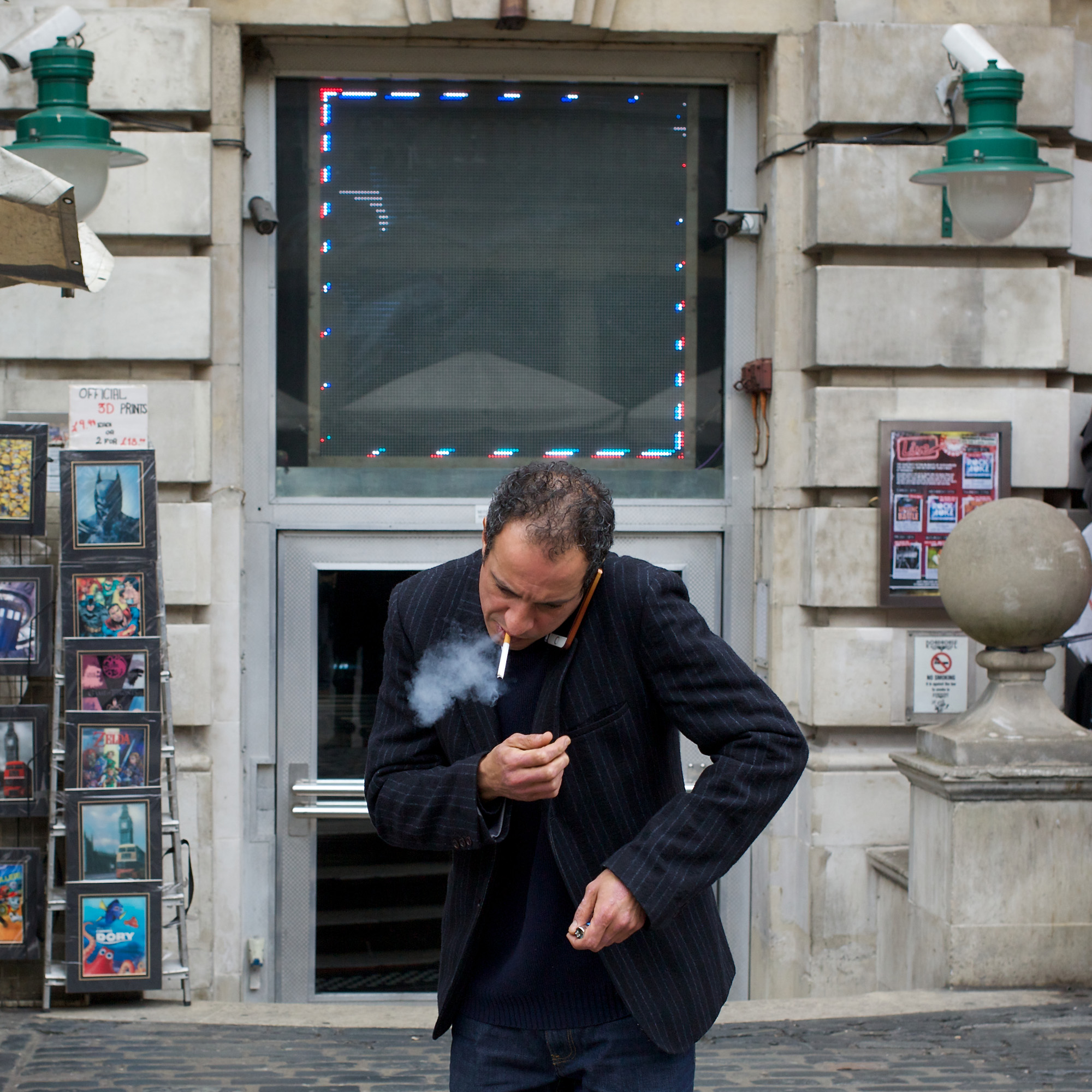If you were to ask me about the most significant development in street photography in the last thirty years, my reply would not be about digital cameras or photo editing software. It would be about what people are actually doing in the street.
These days, everyone is on the phone. Thirty years ago no one was on the phone. That’s the difference.
If Henri Cartier-Bresson were alive today and able to photograph a man leaping a puddle behind the Gare St Lazare, the man would definitely be chatting on a mobile phone.
I returned from a day’s shooting in London recently to discover that nearly every photo showed someone — either the main subject or a person in the background — using (what we used to call) a “mobile”. I wondered, will it be like this for the next hundred years, or will a new technology come along to displace the ubiquitous smartphone?
What’s Good About It?
Given that the main subject of street photography has become “people on the phone,” is it possible to find anything good about it? After all, if we can’t find a way of making it appealing, we must either take laborious steps to avoid it — or turn it to our advantage.
One good thing about the mobile phone is its tendency to absorb the user, so enabling the street photographer to take a picture without being noticed. That’s really helpful. It allows us to get closer and take a more detailed but less cluttered photo.
Unfortunately, there’s one big snag: when they’re standing still, people either close their eyes, or, when they have a live video link, look directly at the phone.
My featured image (above) shows the effect of closed eyes and phone absorption — and also makes a comment on it by including part of a poster featuring a woman with eyes wide open.
Relying on Context
Again, I start with the premise that “everyone’s on the phone,” and this time I’m suggesting an approach which prioritises context above the subject. Here’s an example (below).
If there were no mobile phones, the subject of this image would have no reason to be lingering in the temporary doorway of the restaurant construction. But is he really the subject? The context — the colourful hoarding — is so noticeable as to dwarf the individual worker, however nicely lit he may have been in the sun of the late afternoon.
I’m a little bit worried that I may have been “played” by the company in question. It would be a good PR ploy — wouldn’t it? — to dress up the building site with huge, eye-catching graphics, then to make sure there was a photogenic builder on hand to pose outside whenever a street photographer walks past.
I understand that P.F. Chang’s is the “largest full service, casual dining Chinese restaurant chain in the United States,” so I wouldn’t be surprised if they didn’t pull out all stops for the London launch.
Incidentally, the name doesn’t refer to the sexy lady on the hoarding. She’s not the proprietress, unfortunately! P.F. Chang is Paul Fleming (hence P.F.) and Philip Chiang (now with simplified spelling). Well, it’s better than P.C. Fleming, especially in London.
Listening, Talking, Browsing, Snapping
One reason why the phone has become so ubiquitous is because of its multi-purpose functionality. I recall the launch of the iPhone in 2007 (only twelve years ago!) by Steve Jobs: the first time the world heard about it.
Jobs pretended to be launching “three revolutionary products” – “a widescreen iPod,” “a revolutionary mobile phone,” and thirdly, “a breakthrough Internet communicator.” They were, of course, one and the same device, as he went on to demonstrate.
To say the iPhone became “transformative” is really an understatement. Arguably it’s transformed nearly everything, from popular photography to street navigation. The cellphone is an interactive diary, a notepad, a combined radio, record player, TV and cinema, a restaurant and entertainment guide, even a wallet from which we can spend money. We’re moving towards a cashless society, courtesy of the iPhone (and its imitators). We can run our entire lives from this one, handheld device.
The trouble is: our entire lives tend to consist of what we do with the mobile phone — all that listening, talking, browsing, snapping and spending. Although it connects us to each other, the phone has also become an intermediary standing between us and the real world.
Does anyone really look at Michelangelo’s David? No, they take a photo with a mobile phone in order to establish an entirely illusory connection, rather like sending a tape recorder to an orchestral concert instead of attending in person.
I’m not sure whether the man in my photo (above) is browsing, chatting or snapping. If he’s taking a photograph he’ll be disappointed. The baby seems have disappeared, leaving behind her “thick down warm rompers pink hooded ski suit” (or whatever its called).
In the same way we could be using the mobile phone to help us lead our lives, only to find that life has vanished, leaving the empty husk of virtual reality in its place.
It’s all very confusing. I’m still not sure whether the “smart phone” is the friend or the enemy of the street photographer. Just thinking about it is enough to make me want to take up smoking again.




You bring up some good points here. Thanks.